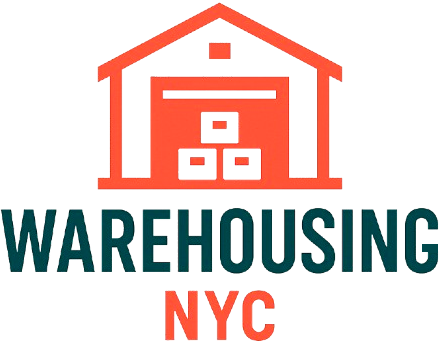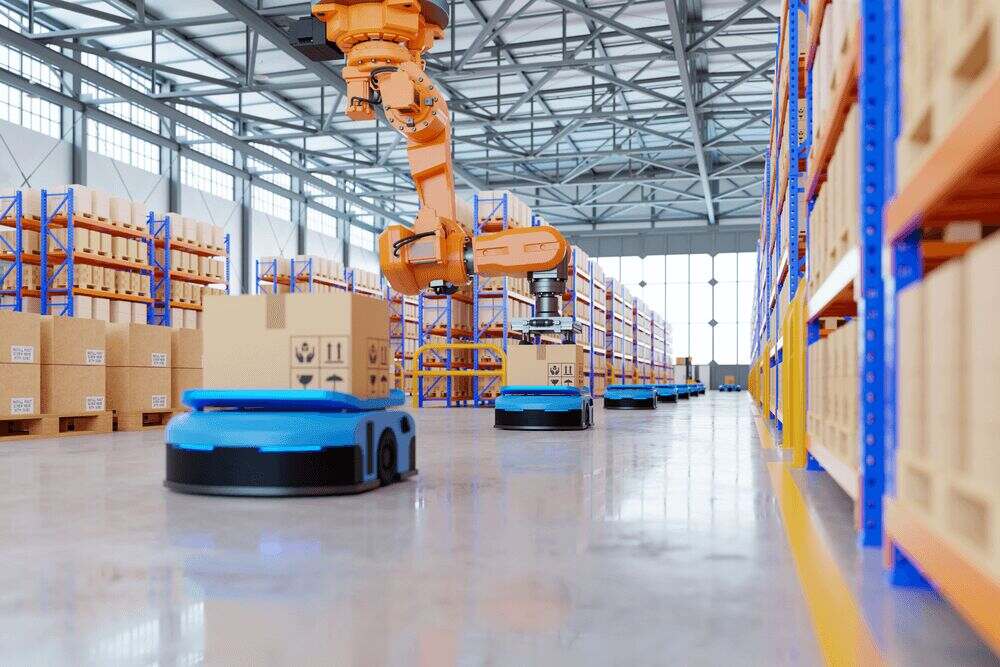Last-mile chaos is a growing concern for businesses navigating the tight streets and soaring expectations of New York City. From gridlocked avenues to missed delivery windows, the final leg of the journey can make or break customer satisfaction. Smart warehousing has emerged as a powerful tool for tackling these challenges head-on to bring order to the urban delivery storm.
Here are five ways smart warehousing and distribution strategies are reshaping last-mile success in NYC.
Table of Contents
Key Takeaways✔ Smart warehousing reduces last-mile delays by placing inventory closer to NYC customers. ✔ Real-time inventory management and distribution systems prevent stockouts and errors. ✔ Automation boosts order fulfillment and warehousing speed without sacrificing accuracy. ✔ Local distribution center services improve delivery reliability and flexibility. ✔ Data insights from warehouse operations help refine supply chain strategies. ✔ A well-planned transition ensures seamless onboarding with a new warehousing partner. ✔ Aligning warehouse operations with business goals supports long-term growth and efficiency. |

1. Smarter Warehouse Locations Close the Gap
In a city like New York, location can mean the difference between an on-time delivery and a frustrated customer. Traditional warehouses on the outskirts often slow things down. Smart warehousing in NYC now focuses on smaller, closer facilities that cut delivery times significantly.
How Smart Placement Speeds Up Final Delivery
- Micro-Fulfillment Centers Reduce Travel Distance: These compact facilities are set up inside city limits, often in underused retail or industrial spaces. They allow companies to process orders within blocks of the delivery zone, speeding up order fulfillment and warehousing.
- Last-Mile Hubs Handle Dense Delivery Zones: A last-mile hub placed in the right neighborhood can serve thousands of residents within a short radius. With real-time routing tools and efficient pickup systems, these hubs reduce delays and improve warehousing and distribution.
- Zoned Warehousing Avoids Repeat Trips: By dividing NYC into zones and assigning orders to the nearest warehouse, companies avoid backtracking. This zoning method also improves inventory management and distribution by keeping stock where it’s needed most.
2. Real-Time Inventory Systems Prevent Delivery Delays
Accurate inventory data is the backbone of fast, error-free fulfillment. In a fast-paced city like NYC, even small stock errors can cause major last-mile issues. Real-time inventory systems help businesses stay in control and deliver on time.
Why Visibility Matters from Shelf to Sidewalk
- Live Tracking Reduces Out-of-Stock Surprises: When a product shows as available but isn’t actually on the shelf, it leads to canceled orders and missed delivery windows. Real-time updates in inventory management and distribution systems prevent this by syncing stock across all locations.
- Predictive Restocking Minimizes Shortages: Smart systems analyze buying trends and automatically reorder fast-moving items. This ensures consistent product availability and supports smoother warehousing and distribution operations.
- Inventory Sync Streamlines Fulfillment: Seamless integration between warehouse software and ordering platforms prevents overselling and mis-shipments. Businesses using synced systems report fewer returns and improved order fulfillment and warehousing efficiency.
3. Automation Speeds Up Order Processing
Manual warehouse tasks slow down the entire supply chain, especially during peak hours. Automation helps NYC-based distribution center services keep up with tight delivery windows and large order volumes. These technologies handle repetitive tasks faster and with fewer mistakes.
How Technology Powers Faster Fulfillment
- Automated Sorting Increases Throughput: Machines scan and sort packages faster than humans, reducing bottlenecks. With automation, companies process more orders per hour and scale up their order fulfillment and warehousing capabilities.
- Robotics Support High-Density Storage: Robots retrieve products from high shelves or tight spaces, maximizing square footage in compact NYC warehouses. This makes warehousing and distribution more space-efficient without slowing down pick times.
- Barcode Scanning Reduces Errors: Smart scanners instantly verify product details during packing. This step cuts down on human mistakes and improves supply chain warehousing and distribution accuracy.
4. Smarter Delivery Coordination Eliminates Gaps
Even when everything inside the warehouse runs smoothly, poor delivery coordination can ruin last-mile performance. NYC requires more than just quick packing—it demands smart handoffs and dynamic scheduling. Partnering with a trusted commercial moving company and local distribution center services helps streamline this phase.
How Coordination Bridges the Final Mile
- Driver Dispatch Tools Boost Punctuality: Delivery software assigns routes based on real-time conditions like traffic or weather. With this approach, warehousing and distribution teams can adapt quickly and reduce late arrivals.
- Flexible Windows Reduce Failed Deliveries: Giving recipients more control over delivery times prevents missed drop-offs. This coordination method supports more reliable inventory management and distribution flow.
- Courier Integration Streamlines Hand-Offs: When couriers sync directly with warehouse systems, pickups become faster and more predictable. This tight integration enhances overall order fulfillment and warehousing performance.
5. Data Insights Lead to Smarter Decisions
NYC logistics thrive on more than speed—they need smart decision-making backed by data. By reviewing warehouse performance metrics, companies can spot inefficiencies and fine-tune operations. Data transforms warehousing and distribution into a strategic advantage.
How Analytics Drive Smarter Logistics
- Delivery Heatmaps Highlight Trouble Spots: Analyzing where delays happen most often allows teams to adjust delivery routes or warehouse locations. These insights improve supply chain warehousing and distribution over time.
- Order Accuracy Metrics Identify Weak Links: Tracking mis-picks or packing errors helps pinpoint where training or automation may be needed. Improving accuracy reduces costly returns and boosts order fulfillment and warehousing quality.
- Forecasting Improves Capacity Planning: Using seasonal and demand trends, companies can prep for busy periods before they hit. Better forecasting supports more efficient inventory management and distribution planning across NYC.
How to Choose the Right Distribution Center Services in NYC
The global warehousing market size is projected to grow at an annual rate of 8.1% from 2024 to 2030, reflecting the increasing need for efficient logistics in fast-paced urban environments. In New York City, where space is limited and delivery expectations are high, finding the right distribution center services can determine how smoothly a business operates in the final mile.
These six criteria help businesses make informed decisions when selecting a warehousing and distribution partner in New York, NY, that aligns with their growth goals.
1. Location and Proximity to Target Customers
In NYC, minutes matter. A distribution center located within or near high-demand zones—like Manhattan, Brooklyn, or Queens—can significantly reduce delivery time. Businesses should prioritize warehousing and distribution hubs that sit close to their customer base to optimize last-mile delivery efficiency.
2. Technology Integration and System Compatibility
A provider’s ability to connect with existing platforms—such as inventory management and distribution software, ERP systems, or e-commerce channels—is essential. Look for centers that offer real-time syncing and API capabilities to ensure data flows seamlessly. Integrated order fulfillment and warehousing platforms reduce delays and manual errors.
3. Experience with Urban Logistics
NYC isn’t like other cities—limited parking, strict delivery windows, and complex building access rules are daily challenges. Providers with local expertise can navigate these issues efficiently, ensuring fewer delays and missed deliveries. Supply chain warehousing and distribution partners with proven NYC experience are more likely to deliver consistent service.
4. Scalability During Peak Seasons
Seasonal spikes can overwhelm an unprepared facility. Distribution center services should offer flexible space, staff, and transportation resources that scale with business needs. This ability to ramp up order fulfillment and warehousing during high-volume periods is critical for maintaining service levels.
5. Value-Added Services and Customization
Beyond basic storage and shipping, many businesses need specialized support—such as kitting, labeling, returns processing, or temperature-controlled zones. Providers that offer custom warehousing and distribution solutions can better align with unique operational requirements. These extras streamline workflows and reduce outsourcing needs.
6. Transparency and Performance Reporting
Access to performance metrics like order accuracy, turnaround times, and inventory levels empowers better decision-making. A reliable partner will offer regular reporting and dashboards tied to inventory management and distribution outcomes. Transparency builds trust and helps businesses identify ways to continuously improve fulfillment operations.

How to Align Inventory Management and Distribution with Business Goals
Inventory decisions affect more than the warehouse—they directly impact cash flow, customer satisfaction, and long-term scalability. For NYC-based businesses, aligning inventory management and distribution strategies with broader goals ensures that warehousing supports—not stalls—growth. These six focus areas help businesses tighten operations, reduce waste, and create a smarter supply chain foundation.
1. Define Inventory Turnover Targets Based on Sales Cycles
A company selling high-volume consumer goods in NYC will have different needs than one shipping specialty items nationwide. Setting clear turnover targets ensures inventory isn’t sitting idle, draining resources. Smart warehousing and distribution partners help monitor product movement and flag slow-moving stock for early action.
2. Sync Inventory Levels with Marketing and Sales Campaigns
When sales teams launch promotions, stock must be ready to move. Distribution center services that coordinate with marketing calendars can adjust inventory levels ahead of time. This proactive approach prevents stockouts, supports campaign goals, and strengthens order fulfillment and warehousing performance.
3. Use Demand Forecasting to Guide Stocking Decisions
Historical sales data, seasonality, and regional trends inform smarter purchasing. Providers who integrate forecasting tools into inventory management and distribution systems help reduce overstock and missed sales. These insights let businesses fine-tune how much product is kept on hand at NYC warehouses.
4. Segment Inventory Based on Product Value and Movement
Not all items need the same treatment—some require rapid replenishment, others long-term storage. Grouping products by value, size, or turnover speed helps distribution center services prioritize resources efficiently. This segmentation improves warehousing and distribution workflows without overcomplicating the system.
5. Integrate Inventory Metrics with Broader KPIs
Inventory goals shouldn’t live in a silo—they should connect with broader KPIs like customer retention, revenue growth, or delivery speed. Reporting tools that link warehouse data with overall business metrics offer actionable insights. This alignment helps refine supply chain warehousing and distribution strategies over time.
6. Regularly Audit Inventory Processes for Gaps
Audits expose inefficiencies, miscounts, or outdated workflows that quietly erode performance. Businesses working with warehousing and distribution partners should schedule regular process reviews and implement improvements. Tight audits also enhance order fulfillment and warehousing accuracy, ensuring reliable service to end customers.
How to Plan a Seamless Transition to a New Warehousing Partner
Switching to a new warehousing provider can feel risky, but the right plan minimizes disruption and builds a stronger foundation for growth. Whether moving from in-house fulfillment or replacing an underperforming partner, a structured approach protects operations during the handoff—especially since short-distance moves are the most common type of relocation in urban areas like New York City.
Here are six key steps to ensure the transition supports both immediate needs and long-term warehousing and distribution goals.
1. Start with a Detailed Operational Assessment
Before selecting a new provider, businesses should audit current warehouse operations—what’s working, what’s not, and what needs to change. This includes evaluating inventory accuracy, turnaround times, and existing supply chain warehousing and distribution gaps. A clear baseline makes it easier to set expectations and track improvement.
2. Involve Key Stakeholders Early
Operations, logistics, sales, and finance teams should all be involved in the planning phase. Each department brings insight into how the warehousing and distribution process impacts their area, from inventory management and distribution to customer satisfaction. Cross-functional input helps avoid blind spots and sets up smoother onboarding.
3. Map Out a Transition Timeline with Contingencies
A rushed transition increases the risk of lost inventory or delayed orders. Businesses should work with their new partner to create a phased timeline that includes buffer periods for training, system integration, and inventory migration. Built-in contingencies protect order fulfillment and warehousing performance during the switch.
4. Align Systems and Integrate Technology Early
Inventory systems, order management platforms, and reporting tools need to sync before day one. Testing integrations ahead of time ensures real-time data updates and uninterrupted supply chain warehousing and distribution. The smoother the tech setup, the faster teams can return to full productivity.
5. Plan Inventory Transfer in Waves, Not All at Once
Moving all stock at once can overwhelm staff and lead to errors. A phased approach allows teams to test receiving, tracking, and pick-pack processes with smaller inventory batches. This method protects accuracy in both inventory management and distribution while training staff on the new systems.
6. Monitor Performance Closely in the First 90 Days
The first few months with a new warehousing and distribution partner reveal how well the transition was executed. Track KPIs like order accuracy, processing speed, and customer complaints during this time. Quick feedback loops allow both sides to fix issues and refine the order fulfillment and warehousing process.
Frequently Asked Questions (FAQs)
What types of businesses benefit most from third-party warehousing in NYC?
Retailers, e-commerce brands, and B2B distributors all benefit from partnering with third-party warehousing and distribution providers in NYC. These businesses often need flexible space, quick turnaround times, and access to reliable delivery networks. A strong partner can improve order fulfillment and warehousing efficiency while reducing fixed costs.
How do distribution center services handle temperature-sensitive or fragile goods?
Some NYC distribution center services offer climate-controlled storage, specialized racking, and gentle handling protocols for fragile or perishable items. These features help maintain product integrity while supporting consistent warehousing and distribution performance. It’s important to confirm that the facility meets the specific handling requirements of the product type.
Can a business use multiple warehouse locations within NYC for faster delivery?
Yes, many companies adopt a multi-node strategy using several small facilities to reach customers more efficiently across boroughs. This setup enhances supply chain warehousing and distribution by reducing travel time and spreading inventory closer to demand centers. It’s especially useful for high-volume businesses with time-sensitive delivery windows.
How do warehousing partners support sustainability goals?
Some warehousing and distribution providers in NYC use electric delivery fleets, solar-powered facilities, and waste-reduction programs to support greener operations. They may also optimize routing and inventory management and distribution to cut down on unnecessary emissions. Partnering with a sustainability-focused facility can help businesses align logistics with environmental goals.
Are there warehousing solutions that support subscription-based business models?
Yes, certain providers specialize in recurring order schedules, batch processing, and pre-packaged inventory setups to support subscription services. This approach streamlines order fulfillment and warehousing by reducing variation and forecasting demand more accurately. It ensures smooth, on-time deliveries for recurring customers while strengthening inventory control.
Streamline Delivery with Warehousing NYC By Best
Warehousing NYC By Best offers fast, flexible, and tech-driven warehousing and distribution solutions built for the pace of New York, NY. Whether scaling during peak seasons or improving day-to-day inventory management and distribution, our team delivers reliable support that grows with each business. From secure storage to seamless order fulfillment and warehousing, every detail is designed to reduce delays and improve last-mile success.
For businesses ready to move smarter in NYC, we are the partner that gets it done right!

